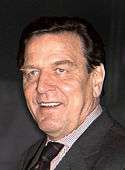University of Göttingen
| Georg-August-Universität Göttingen | |
 | |
| Latin: Universitas Regiæ Georgiæ Augustæ | |
| Motto |
In publica commoda (Latin) Zum Wohle aller (German)[1] |
|---|---|
Motto in English | For the good of all |
| Type | Public Law foundation (Stiftung öffentlichen Rechts, since 2003) |
| Established | 1734 |
| Budget | €1.05 billion (2012) |
| President | Ulrike Beisiegel |
Academic staff | 4.238 |
Administrative staff | 7.683 |
| Students | 26.381 |
| Location | Göttingen, Lower Saxony, Germany |
| Affiliations |
German Excellence Universities Coimbra Group EUA U4 Network |
| Website |
www |
The University of Göttingen (German: Georg-August-Universität Göttingen, GAU), known informally as Georgia Augusta, is a public comprehensive research university in the city of Göttingen, Germany. Founded in 1734 by George II, King of Great Britain and Elector of Hanover, and starting classes in 1737, the university is the oldest in the state of Lower Saxony and the largest in student enrollment, which stands at around 26,000. The university is highly renowned and respected both in Germany and throughout the world. This reputation has thus shaped Göttingen into a university city with a high student and faculty population.
History
Inauguration
.png)

In 1734, King George II of Great Britain, who was also Elector of Hanover, gave his Prime Minister in Hanover, Gerlach Adolph von Münchhausen, the order to establish a university in Göttingen to propagate the ideas of academic freedom and enlightenment at the times of the European Enlightenment.
18th–19th centuries
Throughout the remainder of the 18th century the University of Göttingen was in the top rank of German universities, with its free spirit and atmosphere of scientific exploration and research. Famous till our days is Georg Christoph Lichtenberg, the first to hold a professorship (1769–99) explicitly dedicated to experimental physics in Germany. By 1812, Göttingen had become an internationally acknowledged modern university with a library of more than 250,000 volumes.
In the first years of the University of Göttingen it became known for its faculty of law. In the 18th century Johann Stephan Pütter, the most prestigious scholar of public law at that time, taught jus publicum here for half a century. The subject had attracted students such as Klemens Wenzel Lothar von Metternich, later diplomat and Prime Minister of Austria, and Wilhelm von Humboldt, who later established the University of Berlin. In 1809 Arthur Schopenhauer, the German philosopher best known for his work The World as Will and Representation, became a student at the university, where he studied metaphysics and psychology under Gottlob Ernst Schulze, who advised him to concentrate on Plato and Kant.
.png)
By the university's centenary in 1837, it was known as the "university of law", as the students enrolled by the faculty of law often made up more than half of the university's students. Göttingen became a Mecca for the study of public law in Germany. Heinrich Heine, the famous German poet, studied law and was awarded the degree of Dr.iur..
However, political disturbances, in which both professors and students were implicated, lowered the attendance to 860 in 1834. The expulsion in 1837 of the seven professors – Die Göttinger Sieben – the Germanist, Wilhelm Eduard Albrecht (1800–1876); the historian Friedrich Christoph Dahlmann (1785–1860); the orientalist Georg Heinrich August Ewald (1803–1875); the historian Georg Gottfried Gervinus (1805–1875); the physicist Wilhelm Eduard Weber (1804–1891); and the philologists, the brothers Jakob (1785–1863) and Wilhelm Grimm (1786–1859), for protesting against the revocation by King Ernest Augustus I of Hanover of the liberal constitution of 1833, further reduced the prosperity of the university. Prior to this, the Brothers Grimm had taught here and compiled the first German Dictionary.
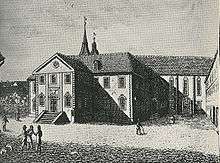
In the 19th century, Gustav von Hugo, the forerunner of the historical school of law, and Rudolf von Jhering, a jurist who created the theory of "culpa in contraendo" and wrote Battle for Right, taught here and maintained the reputation of the faculty of law. Otto von Bismarck, the main creator and the first Chancellor of the second German Empire, had also studied law in Göttingen in 1833: he lived in a tiny house on the "Wall", now known as "Bismarck Cottage". According to oral tradition, he lived there because his rowdiness had caused him to be banned from living within the city walls.
Göttingen also had a focus on natural science, especially mathematics. Carl Friedrich Gauss taught here in the 19th century. Bernhard Riemann, Peter Gustav Lejeune Dirichlet and a number of significant mathematicians made their contributions to mathematics here. By 1900, David Hilbert and Felix Klein had attracted mathematicians from around the world to Göttingen, which made Göttingen a world mecca of mathematics at the beginning of the 20th century.
End of the 19th century – beginning of the 20th century
During this period, the University of Göttingen achieved its academic peak.

In 1903, its teaching staff numbered 121 and its students 1529. Ludwig Prandtl joined the university in 1904, and developed it into a leader in fluid mechanics and in aerodynamics over the next two decades. In 1925, Prandtl was appointed as the director of the Kaiser Wilhelm Institute for Fluid Mechanics. He introduced the concept of boundary layer and founded mathematical aerodynamics by calculating air flow in the down wind direction. Many of Prandtl's students went on to make fundamental contributions to aerodynamics.
From 1921 to 1933, the physics theory group was led by Max Born, who, during this time, became one of the three discoverers of the non-relativistic theory of quantum mechanics. He may also have been the first to propose its probabilistic relationship with classical physics. It was one of the main centers of the development of modern physics.
To date, 47 Nobel Prize laureates have studied, taught or made contributions here. Most of these prizes were given in the first half of the 20th century, which was called the "Göttingen Nobel prize wonder".
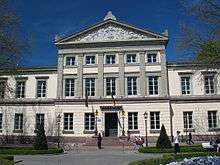
The German inventor of the jet engine, Pabst von Ohain, also studied aerodynamics in Goettingen under Ludwig Prandtl.
Social studies and the study of humanities continued to flourish. Edmund Husserl, the philosopher and known as the father of phenomenology, taught here. Max Weber, the sociologist studied here for one term.
During this time, the German language became an international academic language. A number of dissertations in the UK and the US had German titles. One might be considered having had a complete academic training only when one had studied in Germany. Thus, many American students were proud of having studied in Germany, and the University of Göttingen had profound impacts on the US. A number of American politicians, lawyers, historians and writers received their education from both Harvard and Göttingen. For example,Edward Everett, once Secretary of State and President of Harvard University, stayed in Göttingen for two years of study. George Ticknor spent two years studying classics in Göttingen. John Lothrop Motley, a diplomat and historian, even had personal friendship with Otto von Bismark during his two-year-long study in Göttingen. George Bancroft, a politician and historian, even received his PhD from the University of Göttingen in 1820.[2]
"Great purge" of 1933
In the 1930s, the university became a focal point for the Nazi crackdown on "Jewish physics", as represented by the work of Albert Einstein. In what was later called the "great purge" of 1933, academics including Max Born, Victor Goldschmidt, James Franck, Eugene Wigner, Leó Szilárd, Edward Teller, Emmy Noether, and Richard Courant were expelled or fled. Most of them fled Nazi Germany for places like the United States, Canada, and the United Kingdom.


Renovation after War
After World War II, the University of Göttingen was the first university in the western Zones to be re-opened under British control in 1945. Jürgen Habermas, a German philosopher and sociologist, pursued his study here in Göttingen. Later, Richard von Weizsäcker, the former President of Germany, earned his Dr.Jur. here. Gerhard Schröder, the former Chancellor of Germany, also graduated from the school of law here in Göttingen, and he became a lawyer thereafter.
Current status
Today the university consists of 13 faculties and around 26,000 students are enrolled. More than 400 professors and 4,000 academic staff work at the university, assisted by a technical and administrative staff of over 7,000. The post-war expansion of the university led to the establishment of a new, modern 'university quarter' in the north of the town. The architecture of the old university can still be seen in the Auditorium Maximum (1826/1865) and the Great Hall (1835/1837) at Wilhelmsplatz.
Faculties, centers, and institutes
The university encompasses 13 faculties and a total of 47 additional centers and institutes (including associated centers and institutes but excluding institutes that operate within the faculties themselves as well as the Max Planck Institutes, which collaborate with the university).
The faculties are:
- Faculty of Agricultural Sciences
- Faculty of Biology and Psychology
- Faculty of Chemistry
- Faculty of Forest Sciences and Forest Ecology
- Faculty of Geoscience and Geography
- Faculty of Mathematics and Computer Science
- Faculty of Physics
- Faculty of Law
- Faculty of Social Sciences
- Faculty of Economic Sciences
- Faculty of Humanities
- Faculty of Theology
- Medical Center (Universitätsmedizin Göttingen)
Centers and institutes:
- Göttingen Research Campus
- Göttingen Academy of Sciences and Humanities
- GWDG (IT Center)
- German Aerospace Center (DLR)
- German Primate Center
- Institute for Regional Research
- Institute of the Protestant Church in Germany for Ecclesiastical Law
- Laser Laboratory Göttingen
- Centrum Orbis Orientalis et Occidentalis (CORO) – Center for Ancient and Oriental Studies
- Center for Modern East Asian Studies (CeMEAS)
- Center for Modern Indian Studies (CeMIS)
- Courant Research Center: Education and Religion
- Courant Research Center: Text Structures
- Göttingen Center for Digital Humanities
- Centrum Orbis Orientalis et Occidentalis (CORO) - Abteilung Lehre II - Antike Kulturen
- Internationales Schreibzentrum
- Center for Medieval and Early Modern Studies (ZMF)
- Center of Modern Humanities (ZTMK)
- Center for Comparative Literature Studies
- Forum for Interdisciplinary Religious Studies (FIRSt)
- Bernstein Center for Computational Neuroscience Göttingen (BCCN)
- Courant Research Center: Evolution of Social Behaviour
- Courant Research Center: Geobiology
- Courant Research Center: Nano-Spectroscopy and X-Ray Imaging
- Courant Research Center: Higher Order Structures in Mathematics
- DFG (Deutsche Forschungsgemeinschaft) Research Center for the Molecular Physiology of the Brain (CMPB)
- European Neuroscience Institute (ENI)
- Geosciene Center
- Göttingen Center for Molecular Biosciences (GZMB)
- Center of Biodiversity and sustainable Land Use
- Center for Statistics (ZfS)
- Center for Systems Neuroscience
- Center for Computational Sciences
- Research Center for Animal Production and Technology
- Center for European, Governance and Economic Development Research (cege)
- Courant Research Center: Poverty, Equity and Growth in Developing Countries
- Institute of Diversity Research
- Interdisciplinary Center for Sustainable Development (IZNE)
- Center for Social Science Methods (MZS)
- Center for Empirical Research into Teaching and Schools (ZeUS)
- Center for Medical Law
- Institute of Regional Research
- Institute of Sugar Beet Research
- Sociological Research Institute (SOFI)
- Institute of Economics in Small Business Economics
- Institute of Applied Plant Nutrition (IAPN)
- SFB 755 Nanoscale Photonic Imaging
- SFB 803 Functionality Controlled by Organization in and between Membranes
- SFB 860 Integrative Structural Biology of Dynamic Macromolecular Assemblies
- SFB 889 Cellular Mechanisms of Sensory Processing
- SFB 937 Collective Behavior of Soft and Biological Matter
- SFB 963 Astrophysical Flow Instabilities and Turbulence
- SFB 990 Ecological and Socioeconomic Functions of Tropical Lowland Rainforest Transformation Systems (Sumatra, Indonesia)
- SFB 1002 Modulatory Units in Heart Failure
- SFB 1073 Atomic Scale Control of Energy Conversion
Reputation
| University rankings | |
|---|---|
| Global | |
| ARWU[3] | 101-150 |
| Times[4] | 99= |
| QS[5] | 168= |
Göttingen is one of the most prestigious universities in Germany. A member of the Coimbra Group, it also enjoys great international renown. Within the framework of the 2006–07 German Universities Excellence Initiative, the University of Göttingen won funding for its future concept "Tradition, Innovation, Autonomy," its graduate school "Neurosciences and Molecular Biosciences," and its research cluster "Microscopy at the Nanometer Range." In the 2012 Excellence Initiative, however, Göttingen succeeded in obtaining funds for its graduate school "Neurosciences and Molecular Biosciences" and its research cluster "Microscopy at the Nanometer Range" but failed in its bid for future concept financing.
The University of Göttingen is associated with 47 Nobel laureates. The most recent Nobel laureates associated with the university are Stefan Hell (Nobel Prize in Chemistry, 2014) and Thomas C. Südhof (Nobel Prize in Physiology or Medicine, 2013). Stefan Hell has been a lecturer (in Privatdozent capacity) at the University of Göttingen since 2004 and the director of the Max Planck Institute for Biophysical Chemistry in the Göttingen Research Campus since 2002, while Thomas Südhof, currently a professor at Stanford University, obtained his PhD degree in Göttingen.
Associated institutions
The university is organizationally and personally interlinked with the following independent and semi-independent institutions. There are four Max Planck Society for the Promotion of Science Institutes situated in Göttingen:
- Max Planck Institute for Biophysical Chemistry (Karl Friedrich Bonhoeffer Institute)
- Max Planck Institute for Experimental Medicine
- Max Planck Institute for Dynamics and Self-Organization, formerly Max Planck Institute for Flow Research
- Max Planck Institute for the Study of Religious and Ethnic Diversity, formerly Max Planck Institute for History
- German Primate Center – Leibniz Institute for Primate Research
Besides, the *Max Planck Institute for Solar System Research, formerly Max Planck Institute for Aeronomy is closely linked and has cooperation with the university.
Library
Closely linked with the university is the Göttingen State and University Library (German: Niedersächsische Staats- und Universitätsbibliothek Göttingen, or SUB Göttingen; English short form: Goettingen SUB). With around 4.5 million volumes and precious manuscripts, the library is designed for Göttingen University as well as the central library for the German State of Lower Saxony (with its central catalogue) and for the Göttingen Academy of Sciences, originally founded as the 'Royal Society for Sciences'.


Gardens
- The university maintains three botanical gardens: the Alter Botanischer Garten der Universität Göttingen, the Neuer Botanischer Garten der Universität Göttingen, and the Forstbotanischer Garten und Pflanzengeographisches Arboretum der Universität Göttingen.
Exchange programs
As Germany is a member of the European Union, university students have the opportunity to participate in the Erasmus Programme. The university also has exchange programs and partnerships with reputable universities outside Europe such as University of Technology, Sydney in Australia, Peking University and Fudan University in China, Tokyo University in Japan and the University of California, Berkeley in the United States.[6]
People
Apart from the academics already mentioned, notable people that have studied and taught at Georg-August University include the American banker J. P. Morgan, the seismologist Beno Gutenberg, the endocrinologist Hakaru Hashimoto, who studied there before World War I, and several notable Nobel laureates like Max Planck and Werner Heisenberg.
-

Carl Friedrich Gauss, mathematician
-

Bernhard Riemann, mathematician
-
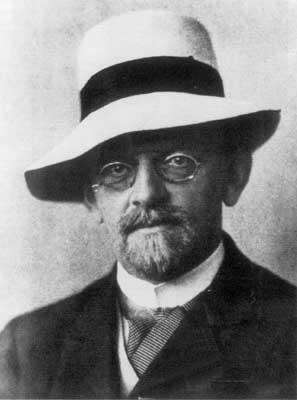
David Hilbert, mathematician
-

Felix Klein, mathematician
-

Constantin Carathéodory, mathematician
-

Peter Gustav Lejeune Dirichlet, mathematician
-

Max Born, physicist
-

J. Robert Oppenheimer, physicist
-

Max Planck, physicist
-

Walther Nernst, chemist
-

Friedrich Wöhler, chemist
-

Heinrich Heine, poet
-
Brothers Grimm, writers
-

Arthur Schopenhauer, philosopher
-

Rudolf von Jhering, jurist
-

Otto von Bismarck, "Iron Chancellor" of the second German Empire
-

Max Weber, sociologist
-

Jürgen Habermas, sociologist
-

John von Neumann, mathematician
-

Gottlieb Burckhardt, psychiatrist
-

Werner Heisenberg, Physicist
-

Enrico Fermi, Physicist
-

Wolfgang Pauli, Physicist
-
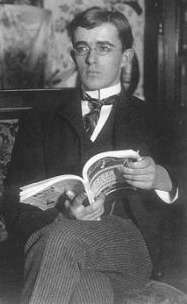
Irving Langmuir. Chemist/Physicist
-

Max Von Laue. Physicist
-
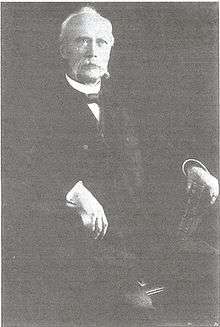
Rudolph Sohm, lawyer and Church historian
-

William Graham Sumner. Sociologist
Tradition
The most famous tradition of the university is that every PhD student who has just passed her/his rigorosum (oral doctoral test) shall sit in a wagon – decorated with flowers and balloons and accompanied by relatives and friends, drive around the inner city and arrive at the Marktplatz – the central square where the old town hall and the Gänseliesel statue are located. The "newly born doctor" shall climb up to the statue of Gänseliesel (a poor princess in an old fairy tale who was compelled to keep geese by a wicked woman and later regained her identity), kiss the Gänseliesel and give bouquets to her.[7]
Campus life
There is an old saying about life in Göttingen, still inscribed in Latin nowadays on the wall of the entrance to the Ratskeller (the restaurant located in the basement of the old town hall): Extra Gottingam non est vita, si est vita, non est ita (There is no life outside Göttingen. Even if it is life, it is no life like here).
"Ancient university towns are wonderfully alike. Göttingen is like Cambridge in England or Yale in America: very provincial, not on the way to anywhere – no one comes to these backwaters except for the company of professors. And the professors are sure that this is the centre of the world. There is an inscription in the Ratskeller there which reads 'Extra Gottingam non est vita', 'Outside Göttingen there is no life'. This epigram, or should I call it epitaph, is not taken as seriously by the undergraduates as by the professors."(Bronowski, 1973, The Ascent of Man, p. 360)

The university is spread out in several locations around the city: The central university complex with the main library and Mensa (student refectory/dining hall) is located right next to the inner city and comprises the faculties for Theology, Social sciences, Law, Economics/Business Administration and Linguistics. The departments of Ancient History, Classics, various languages, Psychology and Philosophy are nearby. Located to the south of the city is the Faculty of Mathematics and Computer Science with its main building, the "Mathematisches Institut", on the same street as the German Aerospace Center and the Max Planck Institute for Dynamics and Self-Organisation. Elsewhere in the city are the departments of Anthropology and Educational Sciences as well as the Medical Faculty with its associated hospitals.
Just north of the city a new scientific center has been built in which most of the natural sciences (Chemistry, Biology, Plant Pathology, Agronomy, Forestry, Geology, Physics, Computer Science) are now located, including the GZMB. Other institutes are set around the inner city.
The university offers eight snack shops and six Mensas serving lunch at low prices for the students. One Mensa also provides dinner for students.
See also
- Göttingen
- Göttinger Digitalisierungszentrum
- Nobel laureates by university affiliation
- Education in Germany
- List of early modern universities in Europe
- List of universities in Germany
- List of forestry universities and colleges
Notes and references
- ↑ Universität Göttingen (October 5, 2009). "Leitbild für Alumni Göttingen". Retrieved October 5, 2009.
- ↑ Deanna Spingola, The Ruling Elite: a Study in Imperialism, Genocide and Emancipation, 2011, p.92。
- ↑ "Academic Ranking of World Universities: Global". Institute of Higher Education, Shanghai Jiao Tong University. 2015. Retrieved August 18, 2015.
- ↑ "World University Rankings 2015-2016". Times Higher Education. 2015. Retrieved October 1, 2015.
- ↑ "QS World University Rankings® 2015/16". Quacquarelli Symonds Limited. 2015. Retrieved September 18, 2015.
- ↑ Dr. Frank Witzel, Andreas Riechel, Internetredaktion, Stabsstelle Presse, Kommunikation und Marketing. "Georg-August-Universität Göttingen - Exchange opportunities outside Europe". Retrieved 4 July 2015.
- ↑ MADHUVANTHI KANNAN. "Scientists' haven". The Hindu. Retrieved 4 July 2015.
- Hilbert, Constance Reid, Springer, April 1996, ISBN 0-387-94674-8. (biography)
External links
| Wikimedia Commons has media related to: |
| Wikisource has original text related to this article: |
- The University of Göttingen – home page
- The "Göttingen Nobel prize wonder"; the 44 Nobel prize laureates affiliated with Göttingen
- Shame at Göttingen, detailing the 1933 purge.
| ||||||||||
| ||||||
| ||||||||||
| ||||||
|
Coordinates: 51°32′31″N 9°56′04″E / 51.54194°N 9.93444°E

